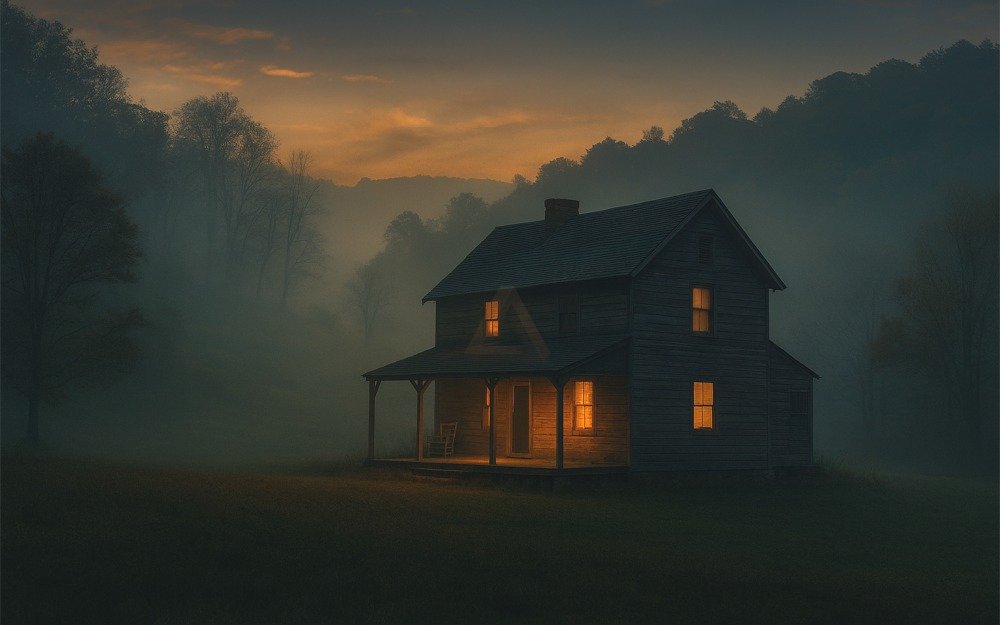
In 1897, a young woman’s death in rural West Virginia triggered one of the strangest murder trials in American history. Elva Zona Heaster Shue was found dead at the foot of the stairs in her home. Her husband claimed it was heart failure. The doctor agreed. But her mother, Mary Jane Heaster, insisted Zona’s ghost had appeared to her in dreams — describing how her neck had been broken by Trout Shue, the man she had married just three months earlier.
The ghost’s testimony was never formally entered into the record. Yet it led to an exhumation, an autopsy, and ultimately a conviction. The Greenbrier ghost story is more than folklore — it’s a case where spectral belief shaped legal consequence.
The Death of Zona Heaster Shue: The Case Begins
Zona Heaster married Erasmus “Trout” Shue in October 1896. He was a blacksmith, older than Zona by more than a decade, and new to Greenbrier County. On January 23, 1897, he sent a neighbour’s son to his home to check on Zona. The boy found her body lying at the foot of the stairs, eyes wide open, arms positioned unnaturally.
Dr. George Knapp arrived later that day. By then, Shue had already dressed Zona in a high-necked gown and tied a veil under her chin — an unusual act for a grieving husband, especially in a community where women typically prepared the dead. Knapp noted her death as “everlasting faint,” a euphemism for heart failure, but admitted he hadn’t examined her neck.
Ghost Testimony and Appalachian Spiritualism
Mary Jane Heaster, Zona’s mother, was unconvinced. She claimed that over four nights, Zona’s ghost visited her in dreams, describing how Shue had snapped her neck in a fit of rage. The ghost’s account was vivid: the first vertebra dislocated, the windpipe crushed, finger marks on the throat.
Appalachian spiritualism in the late 19th century was steeped in dreams, signs, and second sight. Communities often accepted supernatural experiences as part of emotional truth, especially in times of grief. Mary Jane’s story resonated — not just with her neighbours, but with the local prosecutor, John Alfred Preston.
Preston reopened the case. Whether he believed the ghost’s account is unclear, but public sentiment had shifted. Locals whispered about Shue’s violent past. The doctor’s incomplete examination gave Preston legal grounds to order an autopsy.
The Autopsy: Facts Beneath the Folklore
Zona’s body was exhumed on a cold February morning in 1897. The autopsy took place in a one-room schoolhouse, its walls thin against the wind. Three hours passed. When the examination ended, the findings aligned — uncannily — with what Mary Jane Heaster had claimed her daughter’s ghost revealed.
The neck had been broken cleanly between the first and second vertebrae. The windpipe showed signs of compression. Ligaments were torn. There were unmistakeable, finger-shaped bruises.
No one spoke of ghosts in the report. But the facts had surfaced, and they pointed to violence. Erasmus “Trout” Shue was arrested soon after.
Trout Shue’s Past: A Pattern Emerges
During the trial, Shue’s history came to light. He had been married twice before. His first marriage ended in divorce. His second wife died under mysterious circumstances — some said she fell through ice, others claimed she was struck or poisoned.
Shue had told neighbours he wanted seven wives. Zona was his third. The prosecution painted him as a man with a violent streak and a pattern of suspicious deaths.
The Trial: Folklore in the Courtroom
The trial opened in June 1897, drawing quiet crowds to the Greenbrier County courthouse. Mary Jane Heaster took the stand. Her voice did not waver. She spoke of dreams — four nights, each one vivid. Zona’s ghost, she said, had come to her with purpose, describing the violence that ended her life.
The judge allowed the testimony — not as evidence, but as narrative. It was not entered into the record, yet it shaped the room. Jurors listened. Some leaned forward. Others looked away.
The defence tried to dismantle her account. They spoke of grief, of imagination, of a mother undone by loss. But the autopsy had already spoken. The broken neck. The crushed windpipe. The bruises.
By the end of the week, the jury returned a verdict. Erasmus “Trout” Shue was guilty of murder. He was sentenced to life in prison. He died there three years later and was buried without ceremony.
Editorial Restraint: Marking the Myth
This artifact sits at the intersection of folklore and law. History’s Vault marks it as a folkloric trigger with legal consequence. The ghost’s account is not evidence, but a catalyst.
Zona’s death was real. The autopsy was real. The conviction was real. The ghost remains unverified — but culturaly potent.
In shaping this post, we’ve kept the mystery intact, flagged what’s disputed, and made sure every fact is backed by solid sources. The emotional truth of Mary Jane’s grief, the cultural context of Appalachian spiritualism, and the legal outcome form a triangulated narrative.
🔗 Think that was strange? There’s more. Explore our full Unexplained Events Archive.
References
[1] Wikipedia contributors. (n.d.). Greenbrier Ghost. Wikipedia. Retrieved October 3, 2025.
[2] All That’s Interesting. (2023, November 7). The Greenbrier Ghost and the murder of Zona Heaster Shue. Retrieved October 3, 2025.
[3] WV Explorer. (2024, January 20). The full tale of West Virginia’s remarkable Greenbrier Ghost. Retrieved October 3, 2025.
[4] State Library of West Virginia. (n.d.). Greenbrier County court records, 1897. Retrieved October 3, 2025.
[5] The Greenbrier Independent. (1897, June). Coverage of the Shue trial and Zona Heaster’s death. Archived by West Virginia Division of Culture and History. Retrieved October 3, 2025.
[6] National Archives. (n.d.). Historic American court cases: Greenbrier Ghost trial. Retrieved October 3, 2025.
